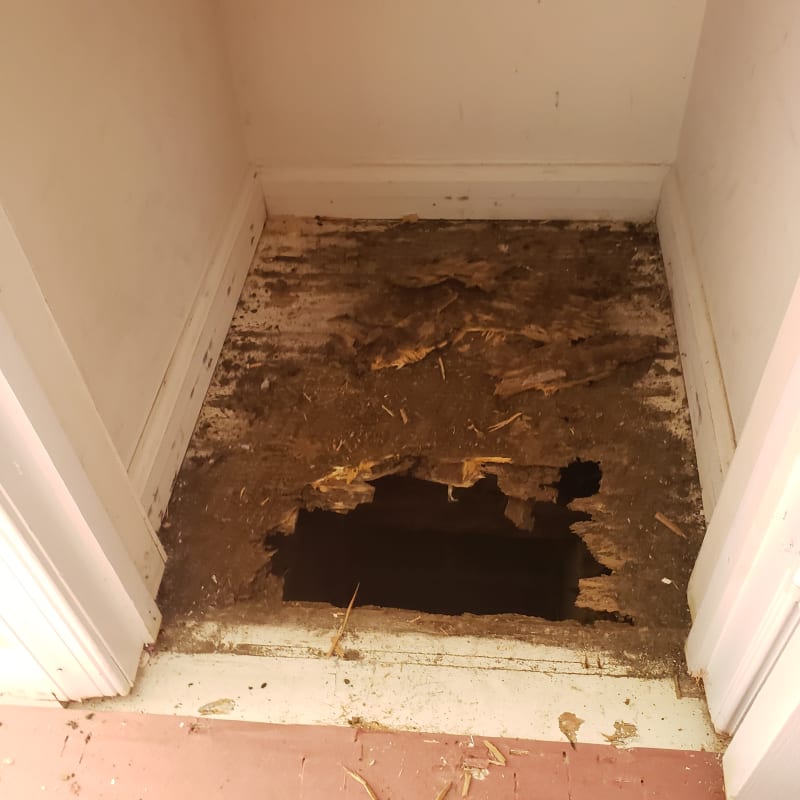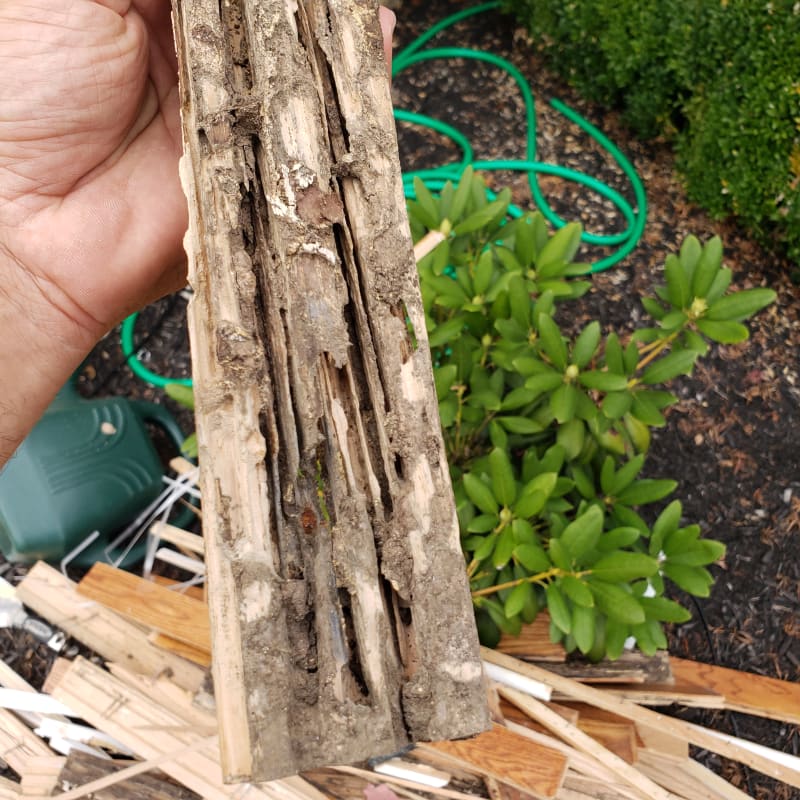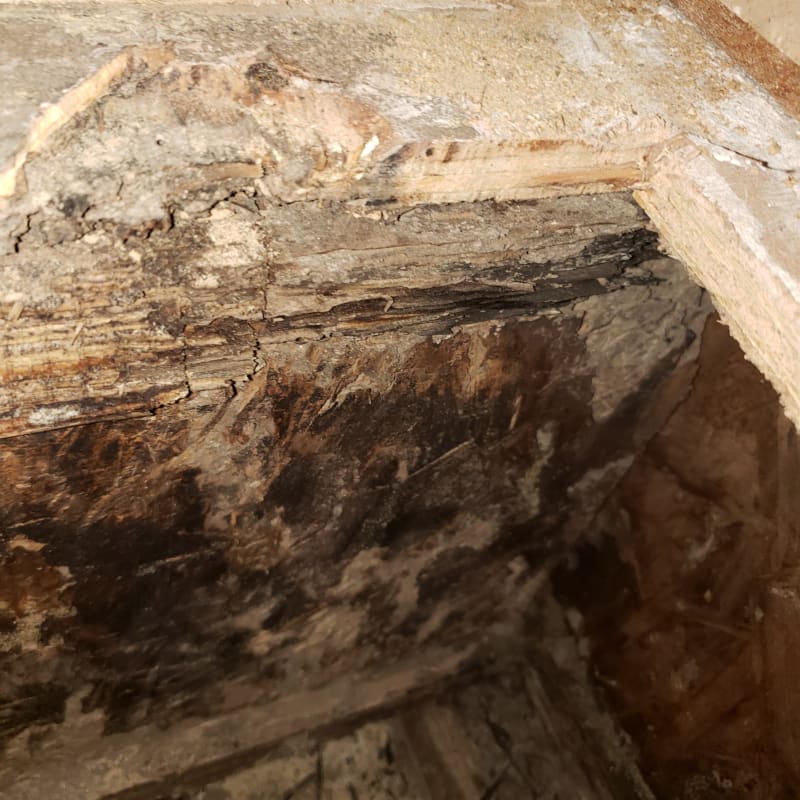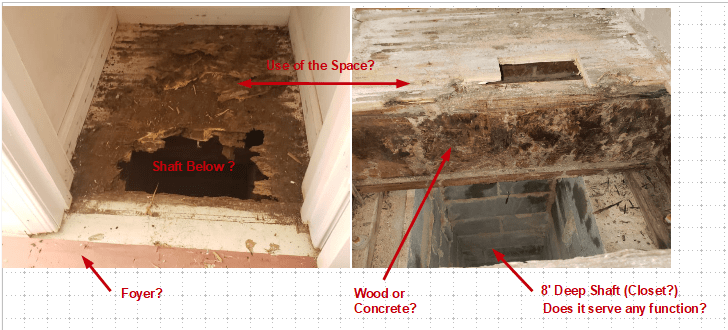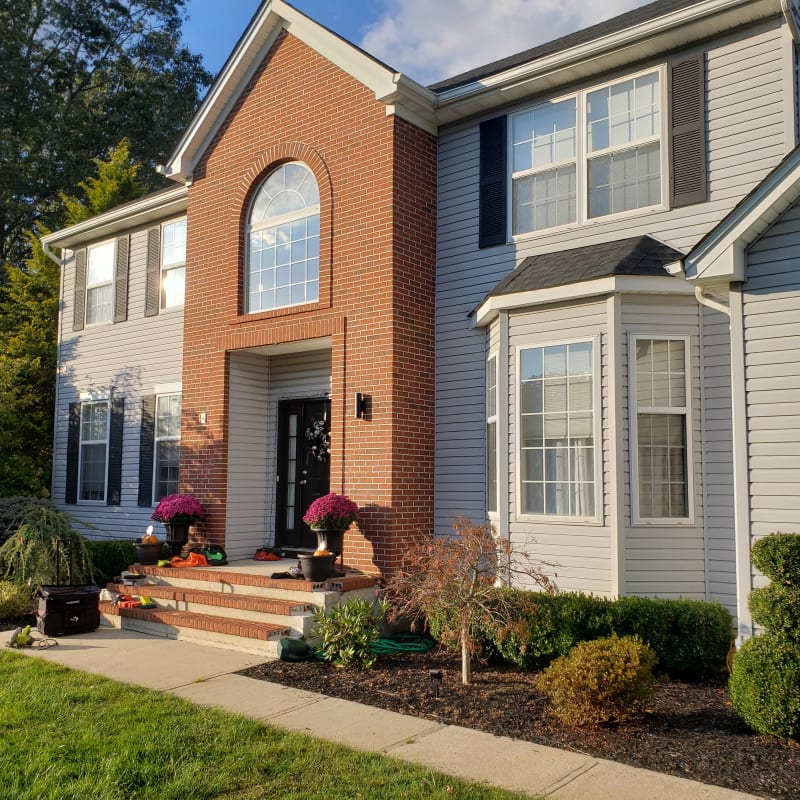Hello all and appreciate any insight and knowledge ahead of your replies.
2 years ago we purchased a 20-year-old Central hole colonial home in New Jersey.
Last eeek we had the flooring replaced in the front of the home, first level.
Upon our contractor removing the old flooring he came upon the two final areas which are two foot by two foot closets that are on both sides of the centered front door, he discovered heavy water and termite damaged underlayment and plywood.
These closets and front door area have an exterior brick facade that is supported by concrete hollow block which go down to the footings 8'.
After termite in spectors as well as Servpro have come here the same consensus is what I discovered which is a heavy amount of humidity being emitted from these hollow cavities.
There's no ventilation anywhere in the concrete block but there is a rising water table specifically on the left side closet Hall which elevates to approximately 10 in of water yet does not rise.
Because of the lack of ventilation this cavity simply leads all the humid damp air which then has attracted the termites to the underside of a habitableliving space plywood.
We have filed an insurance claim though they may not be able to do much they are sending over a structural engineer to ensure that the termites have not caused enough damage to the existing TJI joists.
with the expectation that insurance will not be able to help us that much I'm looking for advice in how these 24x24x96-in cavities can and should be handled.
my Hope was to possibly fill with 3/4-in stone and/or sand and cap off with 4 in of concrete but I worry that the displacement of water will cause the water to enter other areas specifically the foundation wall or our new finish basement.
Another idea I had was to create a ventilation on the exterior of the front patio and cap off the cavity with plastic, metal and finally pressure treated wood layers so that it no longer effects the new plywood and flooring I plan to finish in the closets.
Any other aspects that perhaps I am not considering or how to best address these oddly opened cavities would be greatly appreciated by you fellow folks.
See 3 photos included as a pdf.
2 years ago we purchased a 20-year-old Central hole colonial home in New Jersey.
Last eeek we had the flooring replaced in the front of the home, first level.
Upon our contractor removing the old flooring he came upon the two final areas which are two foot by two foot closets that are on both sides of the centered front door, he discovered heavy water and termite damaged underlayment and plywood.
These closets and front door area have an exterior brick facade that is supported by concrete hollow block which go down to the footings 8'.
After termite in spectors as well as Servpro have come here the same consensus is what I discovered which is a heavy amount of humidity being emitted from these hollow cavities.
There's no ventilation anywhere in the concrete block but there is a rising water table specifically on the left side closet Hall which elevates to approximately 10 in of water yet does not rise.
Because of the lack of ventilation this cavity simply leads all the humid damp air which then has attracted the termites to the underside of a habitableliving space plywood.
We have filed an insurance claim though they may not be able to do much they are sending over a structural engineer to ensure that the termites have not caused enough damage to the existing TJI joists.
with the expectation that insurance will not be able to help us that much I'm looking for advice in how these 24x24x96-in cavities can and should be handled.
my Hope was to possibly fill with 3/4-in stone and/or sand and cap off with 4 in of concrete but I worry that the displacement of water will cause the water to enter other areas specifically the foundation wall or our new finish basement.
Another idea I had was to create a ventilation on the exterior of the front patio and cap off the cavity with plastic, metal and finally pressure treated wood layers so that it no longer effects the new plywood and flooring I plan to finish in the closets.
Any other aspects that perhaps I am not considering or how to best address these oddly opened cavities would be greatly appreciated by you fellow folks.
See 3 photos included as a pdf.

